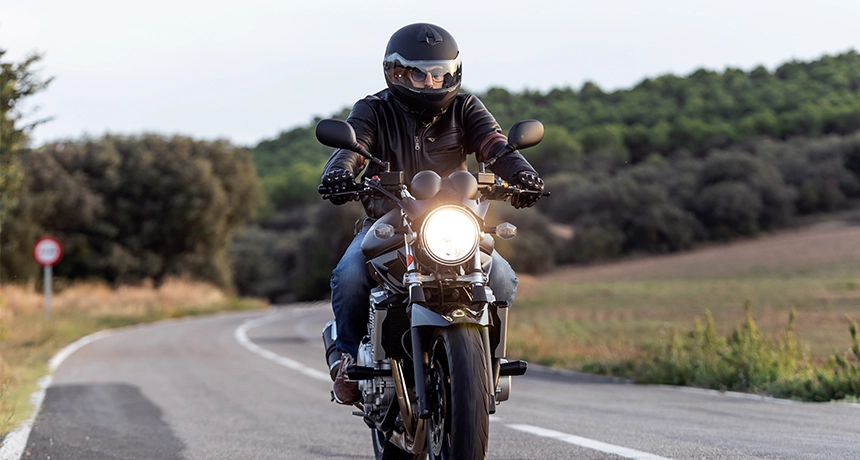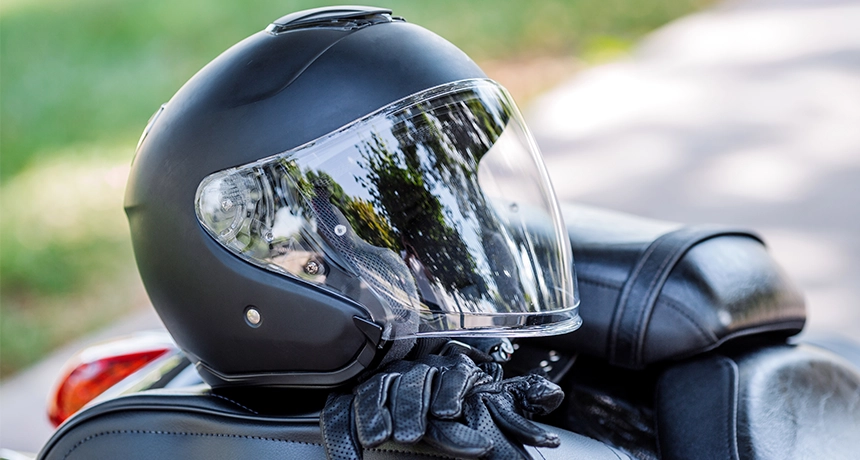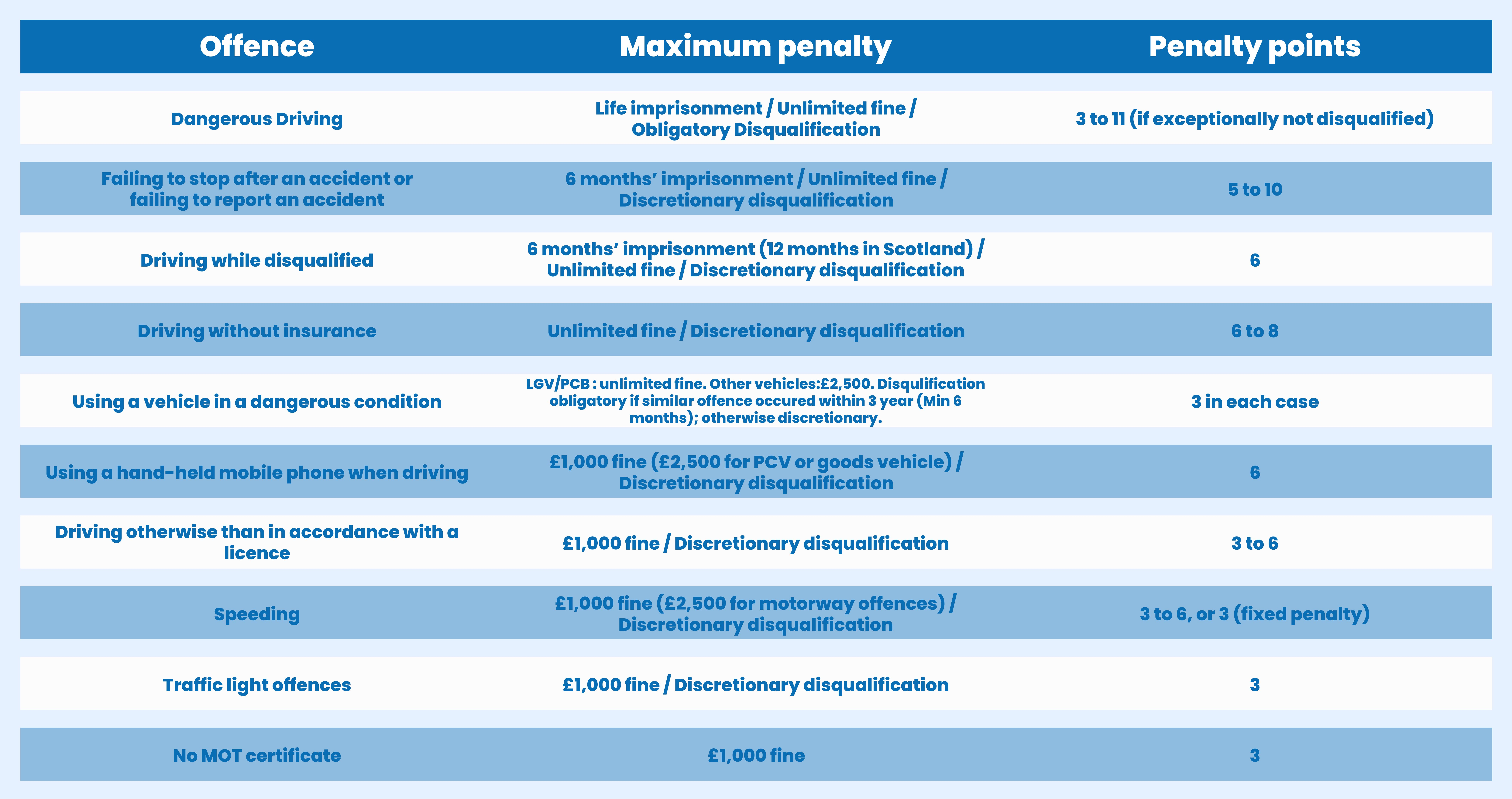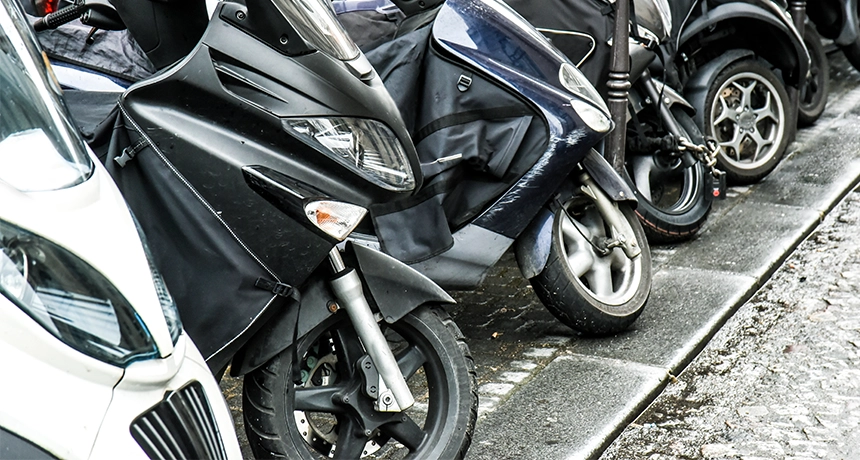Whether you’ve just completed your CBT or have been riding for a little while, navigating laws and regulations can feel intimidating.
Luckily for you, we’ve put together this guide to biking law across the country to help you feel more at ease when riding.
So, without further ado, let’s get into it, shall we?
Riding a Motorbike in the UK | What you will need

To ride a motorbike or scooter on UK roads, you will need:
A Bike License
The type of license you have will decide the type of bike you can ride. For example, if you’re 16 years old and have just completed your CBT, you’ll be able to ride a moped up to 50cc on UK roads. Meanwhile, if you’ve passed your A2 license, you can ride anything with a power output up to 47bhp.
A motorcycle or scooter insurance policy
You can choose the level of cover you need from your insurance policy – whether that be third-party only, third-party fire and theft or fully comprehensive – but it is a legal requirement to have a valid insurance policy if your bike is being ridden on UK roads.
Valid MOT and Road Tax
All motorbikes and scooters used or kept on public roads must have a valid MOT certificate (first needed when the bike is three years old, then required annually) and up-to-date road tax.
Some vehicles – such as vehicles made before 1st January 1985 – are exempt from MOT and do not need to pay vehicle tax. If your two-wheeler meets these requirements, you’ll want to fill out an MOT exemption form and apply for a vehicle tax exemption.
A helmet
In the UK, you’ll need a motorcycle helmet that meets ECE 22.06 standards. You can make sure your helmet meets the standards needed if it features the BSI Kitemark.
2025 UK Law for Motorcyclists

What bikes can you ride? | UK Motorcycle Licensing
The bikes you can ride will depend entirely on the type of license you hold. There are several different types of motorcycle licenses, outlined below:
For a more in-depth look, visit our full guide to motorcycle licensing.
Do you legally need bike insurance to ride a bike in the UK?
Yes. You will need (at the very least) third-party insurance to ride a motorcycle on UK roads. Without insurance, you risk facing an unlimited fine, points on your licence and seizure of your vehicle.
Can you ride a motorcycle with a passenger?
This will depend on your level of cover and the type of license you have.
If you have an AM license or above, you will be able to have a pillion, but you will need to declare this on your insurance, and pay for additional pillion cover – which insures the passenger for injuries.
If you fail to declare this on your insurance, your policy may be invalidated.
What happens if you are caught riding without a licence or insurance?
If you are caught riding without insurance or a license, the consequences can be severe. Your vehicle could be destroyed, and you may be disqualified from riding.
From there, if you continue to ride after being disqualified, you can be arrested.
Motorbike Gear & UK Road Laws

When it comes to buying motorcycle gear, you’ll want to make sure you have what you need to keep yourself safe and ensure you’re meeting legal requirements.
What motorcycle gear do you have to wear legally?
Legally, the only motorcycle gear you have to wear is a helmet, which needs to meet ECE 22.06 standards and be fastened securely to your head.
However, we recommend wearing a motorcycle jacket made of leather or textile, motorcycle trousers, motorcycle armour and motorcycle boots. This will further protect you, reducing your risk of injury.
What are the UK laws surrounding tinted visors?
In the UK, tinted visors can be used only in the day, and need to meet a minimum of 50% visible light transmission. Using a tinted visor at night can be considered dangerous driving and could invalidate your insurance policy.
What can happen if you are caught riding without a helmet?
Without a helmet, you can be fined up to £500, and could receive points on your license.
Plus, if you get into an accident, you’ll be significantly more at risk for a head injury, and your insurance may be invalidated in the event of a claim.
Buying a Motorcycle or Scooter in the UK

Buying a motorcycle or scooter is always a difficult decision, and can be challenging if you don’t yet have your licence or are buying second-hand.
Here’s an overview of the law surrounding buying a two-wheeler.
Buying a motorcycle without a licence
You don’t need a licence to buy a motorcycle, but you do need one to ride it. If you are yet to complete your CBT, you’ll need to arrange for alternative transportation to get your vehicle home, such as a van.
Can you buy a motorcycle without insurance?
You can buy a motorbike without insurance, but you will not be able to legally ride it without an insurance policy in place. Before buying your bike, you may want to research insurance costs to make sure it's within your budget.
Can you buy a bike without a logbook?
It’s worth being wary if a bike doesn’t have a log book – or V5C – as this may be an indication that the bike has been stolen. However, you can get a replacement log book via the DVLA, which costs £25. This is absolutely crucial, as it can be challenging to insure or tax your vehicle without it.
If you do think the bike you have bought or are buying has previously been stolen, contact the police.
Can you buy a motorcycle that has been involved in an accident?
While you can buy a motorcycle that has been involved in an accident and has minor damage, you will not be able to ride it on the road until it has been sufficiently repaired. Your insurance may also be slightly higher than it would be otherwise.
Motorcycle Licence Plates | UK Motorbike Laws

If you want to get a custom license plate, you’ll need to make sure it follows UK regulations. Below, we’ve got a guide to the law surrounding number plates.
What size does your Motorcycle number plate have to be?
Standard motorcycle number plates are 9 x 7 inches. However, they will still need to meet specific requirements regarding character size and spacing, including:
- Characters need to be 64mm tall and 44mm wide (except for the number 1 or the letter L)
- The space between characters must be a minimum of 10mm.
- The thickness of the black print of the characters must be 10mm.
Incorrectly sized number plates could lead to you being fined, cause your bike to fail its MOT or even void your policy in the event of a claim.
Can you buy a 3D Reg Plate?
Yes, you can buy a 3D reg plate. However, it must still meet the above standards and be road legal.
UK Laws regarding Q Plate Bikes
Q Plate Bikes are bikes where the age or identity of the vehicle is unknown. This can be for a variety of reasons, from the bike being fully custom to it being previously stolen.
While you can legally buy a Q-plate motorcycle, it can be harder to take out an insurance policy as the full history of the vehicle is unknown.
You may want to speak to potential insurers to find out the information they’ll need from you before buying a Q plate bike, to make sure you can have a suitable level of coverage.
UK Automotive Laws | Modifications

For some motorcyclists, modifying your bike is a huge part of the experience. However, you’ll need to make sure any modifications you make meet legal requirements and that your insurer has been appropriately notified.
Can you modify a motorbike or scooter?
You can modify a motorbike or scooter, but you’ll want to ensure the modifications you’re making are safe and legal.
Additionally, you’ll need to declare modifications to your insurer, which could impact your premium. Make sure to check the terms of your policy before making any changes, and speak to your insurance provider if you’re not sure.
Can I legally buy a modified bike?
You can buy a modified bike, but you’ll need to make sure it’s accurately registered with the DVLA, has passed its MOT within the last year (unless eligible for exemption) and that all modifications are declared with your insurer.
Making your motorcycle faster | Changing the engine & exhaust
While you can make changes to your bike’s engine and exhaust, you’ll need to make sure the vehicle remains safe and complies with current emission standards. You may have to get an updated MOT to ensure your bike is roadworthy, inform the DVLA of the change and update your insurer
Inform your insurers right away
If you’re making any modifications to your motorbike, you’ll want to notify your insurers immediately. Failure to do so may lead to your policy being voided, which means that any claim may be refused. This is because modifications can increase the level of risk to your vehicle.
Fines & Penalties for Illegal Modifications
If you modify your bike illegally – that is, modifications that go against the Road Traffic Act 1988 – you could be fined, receive up to 6 points on your licence, and your vehicle may even be seized and crushed.
Different UK Motorcycle Laws in UK Cities

While the majority of the country follows the same laws when it comes to motorcycles, there are some city-specific regulations that you’ll need to stay on top of if you’re visiting a new area.
Motorcycle Laws in London
In London, you can use red-route bus lanes with a two-wheeler. You will also be exempt from congestion charges and do not have to pay the daily ULEZ charge, as long as your bike meets minimum emission standards (Euro 3 at the time of writing).
Motorcycle Laws in Manchester
Unlike London, motorbikes cannot use bus lanes in Manchester. It is also illegal to ride off-road two-wheelers in any public spaces, such as public parks.
There are also 124 free motorcycle parking bays in Manchester, but if you choose to park in a regular spot, you will need to pay as normal.
Motorcycle Laws in Birmingham
Similar to Manchester, motorbikes are not permitted in public parks, and the use of a motorbike in this space may lead to you being reported to the police.
Birmingham also has a Clean Air Zone, which is similar to London’s Ultra Low Emissions Zone, but unlike London, motorbikes are automatically exempt from payment, regardless of their level of emissions.
Motorcycle Laws in Liverpool
In Liverpool, there are designated motorcycle parking bays, which are often free of charge. However, you are not permitted to park your bike in regular pay and display bays in the city centre. Similarly to Manchester, motorbikes also cannot use bus lanes.
Where can I Ride My Motorcycle in the UK?

It’s important to make sure you’re not riding your motorbike in restricted areas. If you’re ever unsure, it’s always best to research the area you’re travelling to, to ensure there are no restrictions you’re unaware of.
Can motorcyclists ride in ULEZ Zones?
Yes, motorcyclists can ride in ULEZ zones. If your bike meets a minimum of Euro 3 emission standards, you will not need to pay the ULEZ charge. In any other case, you will have to pay the daily charge of £12.50.
UK Law around riding in bus lanes
In some cases, motorbikes can use bus lanes, but not always. In cities like Manchester, Exeter or Glasgow, you will not be able to use bus lanes. It’s always best to research your area and check bus lane signs for motorbikes. If in doubt, avoid using the bus lane.
Motorcycle Riding Fines
Motorbike fines can vary specifically depending on the degree of the offence committed. For example, running a red light could lead to a £100 fine, while dangerous driving could lead to two years' imprisonment and a driving disqualification. Below is the highway code’s penalty table:

UK Motorbike Parking | Where to Park

There are many free places for motorcycles to park around the country, but you’ll need to know what to look out for and the areas where motorcycles are legally unable to park.
Current UK Motorcycle Parking Legislation
Legally, motorbikes can be parked in motorcycle bays, in some regular car parking bays and on the street, as long as there are no double yellow or red lines.
Unfortunately, rules around parking can differ greatly depending on where you are, so it’s best to check the council website of the area you’re in to ensure you follow all parking rules.
Motorcycle parking penalties & fines
If you don’t pay for parking when required, or park where you’re not supposed to, you may have to pay a parking fine. This typically ranges anywhere from £10 to £160+ depending on your area. You’ll typically have 28 days to pay, with the fine being reduced if you pay within 14 days.
If you don’t pay within 28 days, you’ll have to pay the original cost of the ticket plus an additional 50%.
How to appeal a bike parking fine
If you think you’re being incorrectly fined, you can challenge your parking ticket. You’ll want to provide any evidence you have, like your pay and display ticket, witness statements or photos, and explain your reasons for challenging the fine.
If this challenge is accepted, you will not have to pay the fine. If rejected, you will be given 28 days to pay the ticket, but you can appeal to an independent tribunal.
The Last Stop!
So, there you have it. I hope you found this guide to UK motorcycle law useful.
As always, if you’re looking to insure your own motorcycle, make sure to get a quote direct with Lexham!






